NOTE: This article was first published over at nikonglass (https://goo.gl/admJcE) on the 8th November 2009
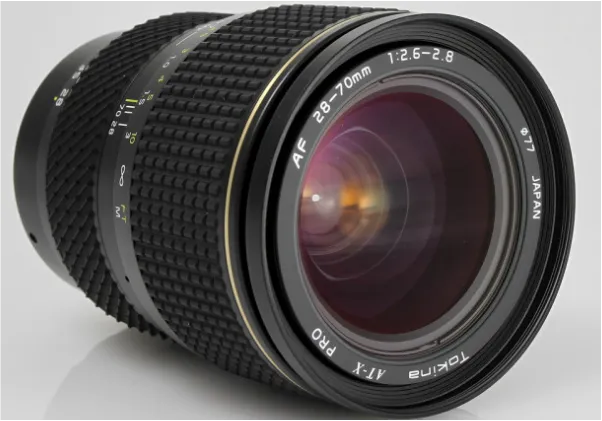
Legendary Tokina
So you finally decided to buy a full frame Nikon (D700 or D610), and are now wondering how good that cheap Tokina can really be. Well you are in luck since I have most of the info you will need so as to not pick the wrong version. You will be pleased to know that the fast Tokina mid range zoom is an excellent investment (considering its price on the used market) but you may want to read on and find out which incarnation is worth buying since there were a few updates to this design and unfortunately, the latest is not the greatest.
Tokina AT-X history
The Tokina Co Ltd. of Japan has been around since the early fifties. Rumors on the Internet suggest that this company was originally started by a group of disgruntled Nikon optical engineers who left Nikon to concentrate on the development of high-quality zoom lenses, which were rare at the time. Whatever the mythology, Tokina consistently produced well made and notable lenses. Originally an OEM manufacturer only, in the early 1970s they began selling lenses under their own Tokina brand. They were one of the first independent companies in the 1970s to produce compact zooms and soon after, an f/2.8 maximum aperture version of the popular 80-20mm zoom. This lens marked the beginning of Tokina's AT-X - Advanced Technology Extra - era (1981) and was built on in the following decade when it acquired the design rights to one of the then most highly regarded fast short zooms, the Angenieux 28-70mm f/2.6, which subsequently appeared as the Tokina AT-X 28-70 f/2.6 - f/2.8.
Angenieux history
The well known (to us older European photographers) French defense and aerospace conglomerate, Angenieux is a company that has always been involved in designing and manufacturing specialized optics for the photo and movie industry since the late thirties. A very innovative company, they will be remembered as the developers of the first retrofocus lens (1950) and of the first zoom lens (1958). Some of their designs were used by Leitz for the Leica R series in the eighties.
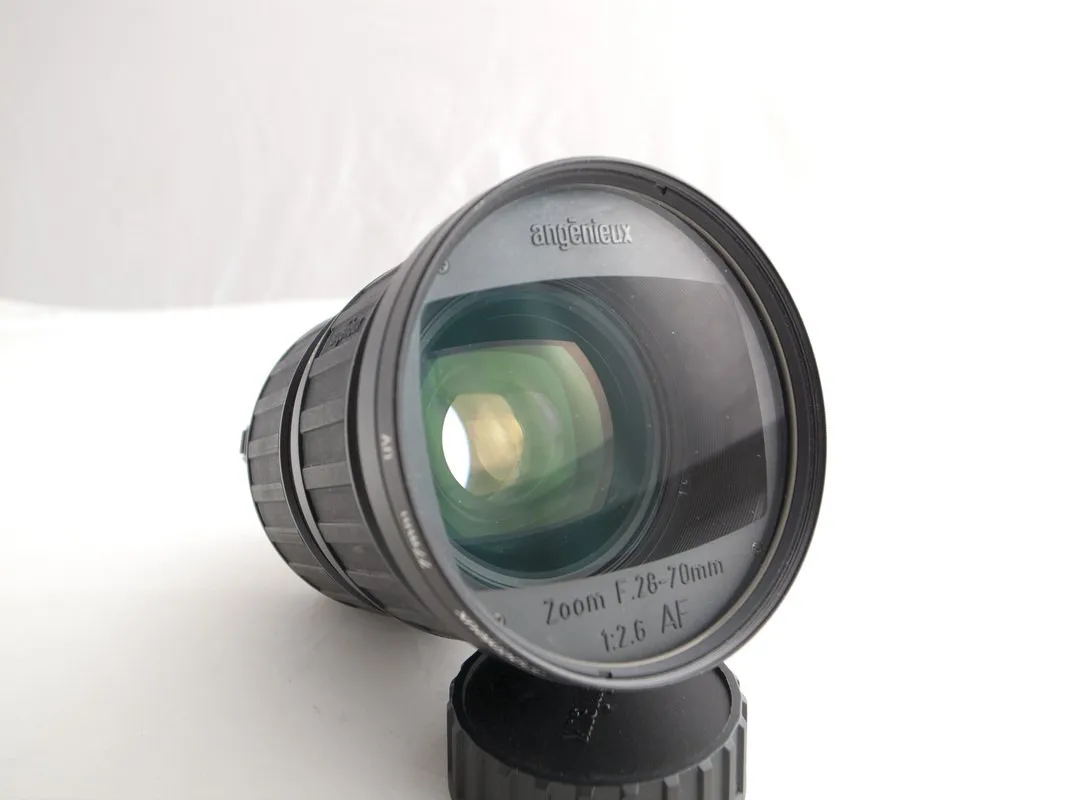


ANGENIEUX 28-70MM F:2.6 AF
The 28-70 f:2.6 AF was Angenieux’s last consumer oriented zoom, that was targeted towards the pro market. The lens was just as good optically as any other pro zoom lens of the time either by Nikon or Canon. Unfortunately, its price was also on par with the best of the competition, which made it a tough sale. Later on when Angenieux pulled out of the SLR market, Tokina managed to get usage rights to the Angenieux design and produce the AT-X PRO AF 28-70mm f/2.6-2.8 lens.
Versions
What follows is a list of the various versions with photos of the inscriptions as found on the inside of the lens around the front element plus a few other pics which I found on the Internet. Because this lens can be found with different mounts (Nikon, Canon, Pentax and Minolta), all of the various versions have different mounts together with different back ends. For instance, the Nikon version is usually thinner at the base and includes an aperture ring, where the Canon version is thicker around the base and does not include an aperture ring. As far as I can tell there are 5 incarnations of this lens, but some speak of more, so if you have any info please feel free to send it along so I can update this list. One difference I know of is that in Japan, there was never mention of a 2.6 aperture and all versions were marketed as f/2.8. . This was because Tokina marketing guru's felt that the american market would prefer exact aperture designations.
1) AT-X TOKINA AF 28-70MM 1:2.8 Ø 72 JAPAN
This is the first version of a fast mid range zoom that Tokina made as far as i can tell. It's not labeled as a Pro version and only has a filter diameter of 72mm instead of the normal 77mm. This version has nothing to do with the Angenieux design.

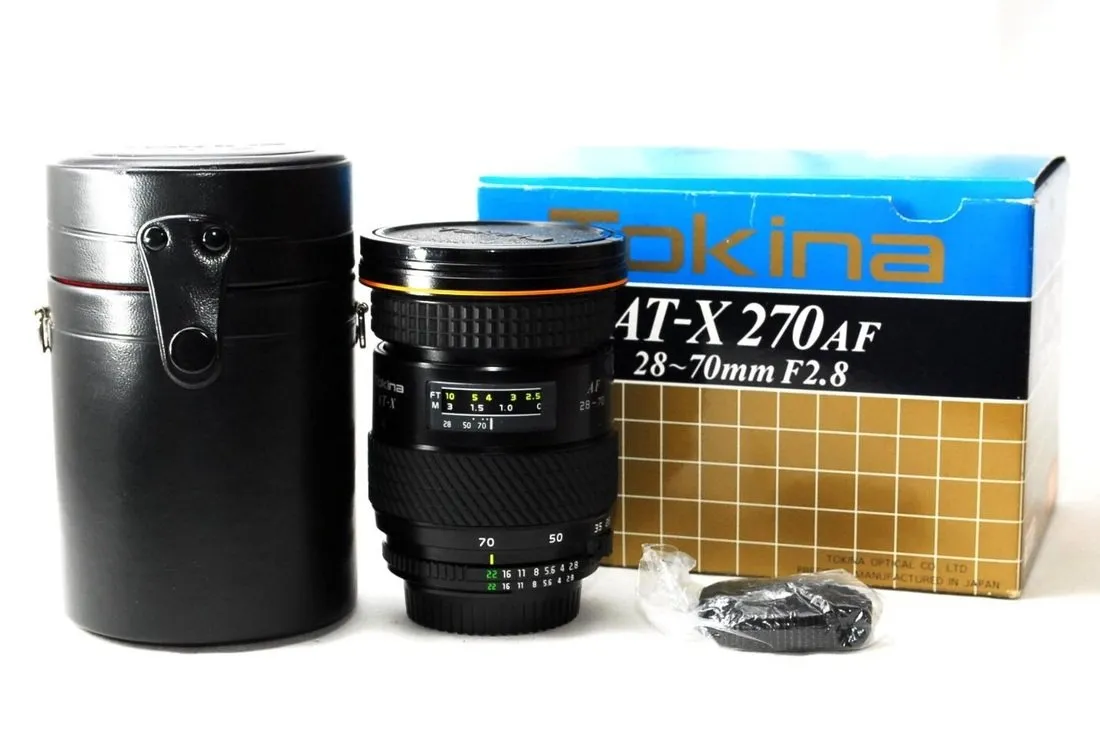






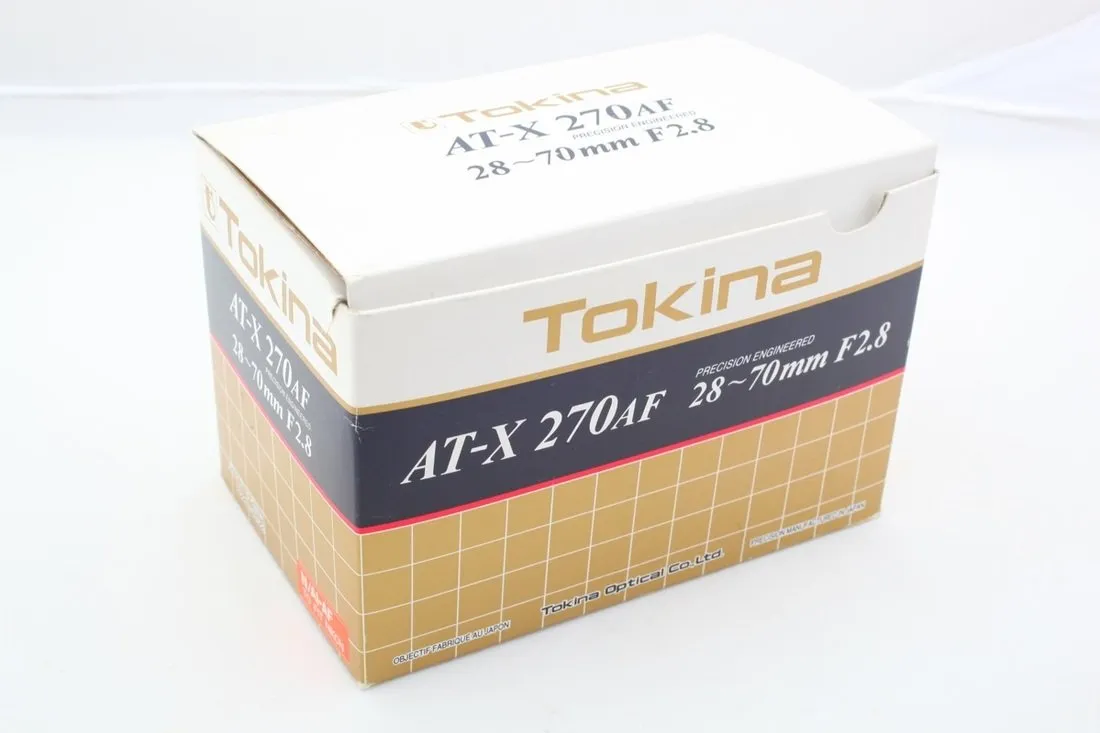
2) TOKINA AT-X PRO AF 28-70MM 1:2.6-2.8 Ø 77 JAPAN (PRO I with screw-on hood)
This is the original Pro version which is also the most sought after version by those new D700 owners in the know since its the version that's based on the Angenieux optical formula. Recognized easily by the ugly and short screw-on hood. Multi-coating was applied to a large number of lens surfaces to help improve contrast while at the same time reducing reflections and ghosting. There is also some suggestion that this version had one HLD (High Refraction Low Dispersion) glass element, though this is most likely not true.




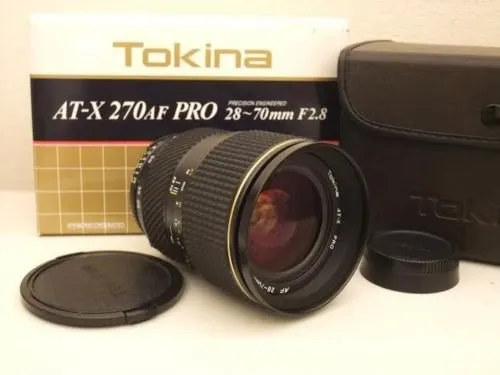

3) AT-X PRO 28-70MM 1:2.6-2.8 Ø 77 JAPAN (PRO II with bayonet hood)
There are a lot of contradicting reports about this lens. In most tests, it performs nearly the same as the Pro I version. Tokina claimed better performance due to better coatings and the added aspherical elements. I originally had high praise for the Pro I version but after using a Pro II version for some time on a D700, i have to say that both are very good performers.
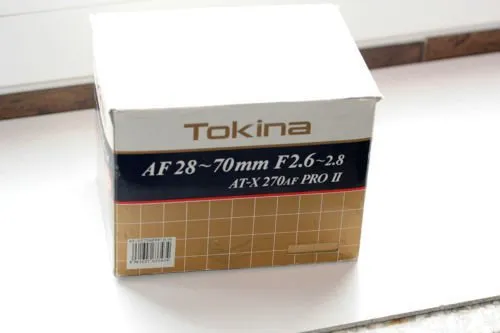

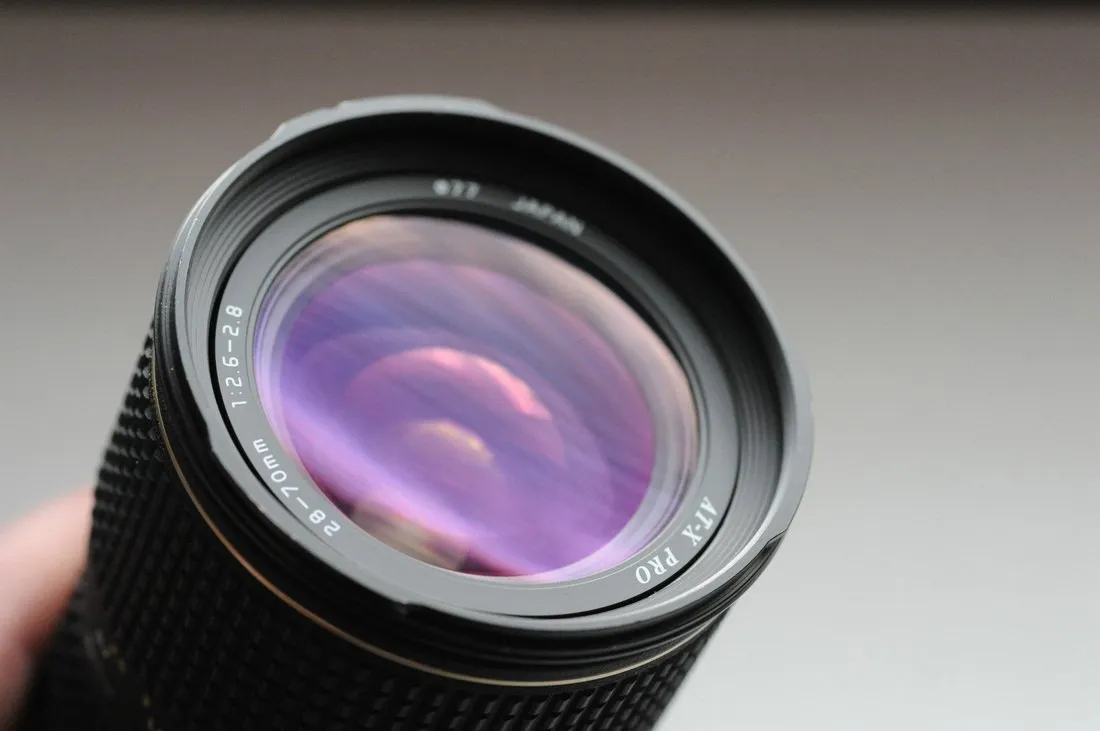
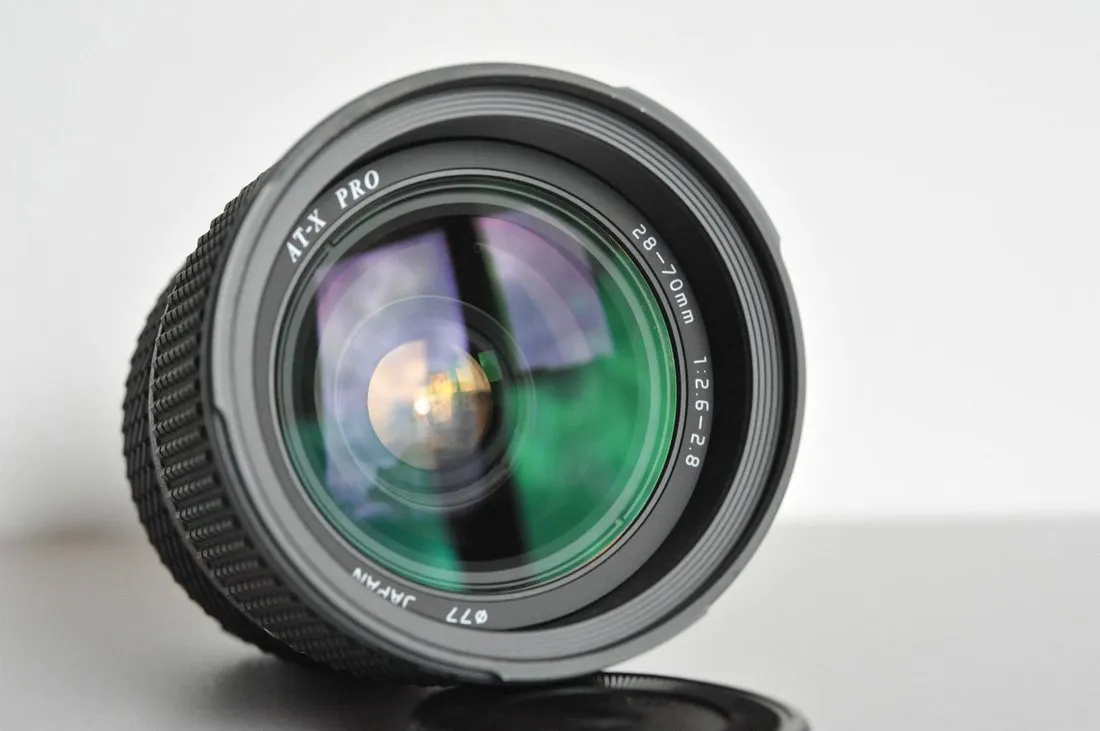
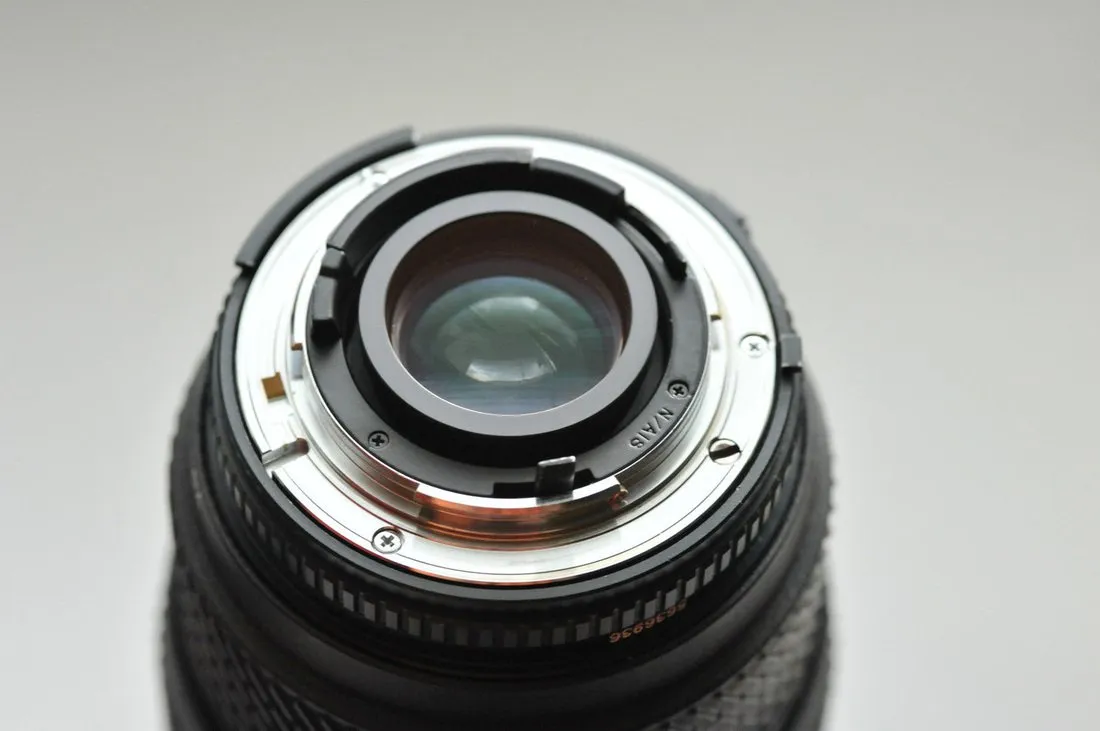

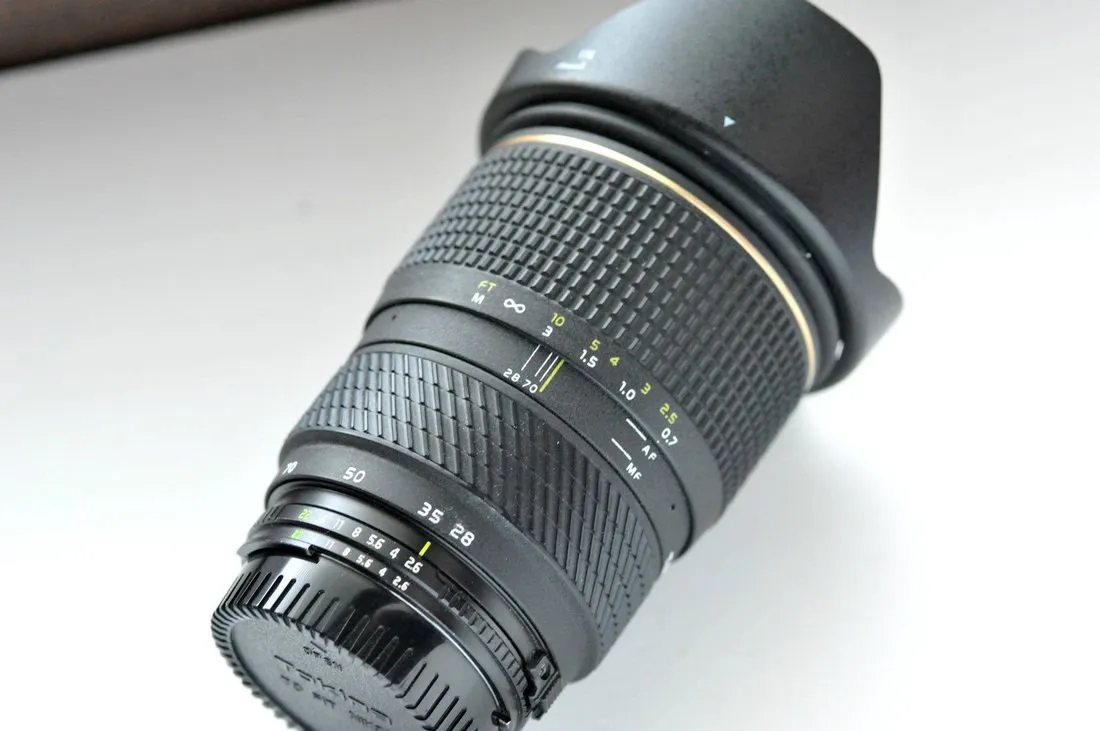


4) TOKINA AT-X PRO 28-80MM 1:2.8 (Gold badge on focus ring)
Unlike its cousins, this version has no markings on the inside around the front element. Instead it carries a gold badge thats glued onto the focusing ring. The 28-80mm was a good performer but no match for the original Pro I and II versions. In a couple of reports, there was even disappointment for the non-pro finish which had a sand like texture that in a couple of cases showed signs of peeling off. Though Tokina lenses are generally regarded as having a good finish and build.
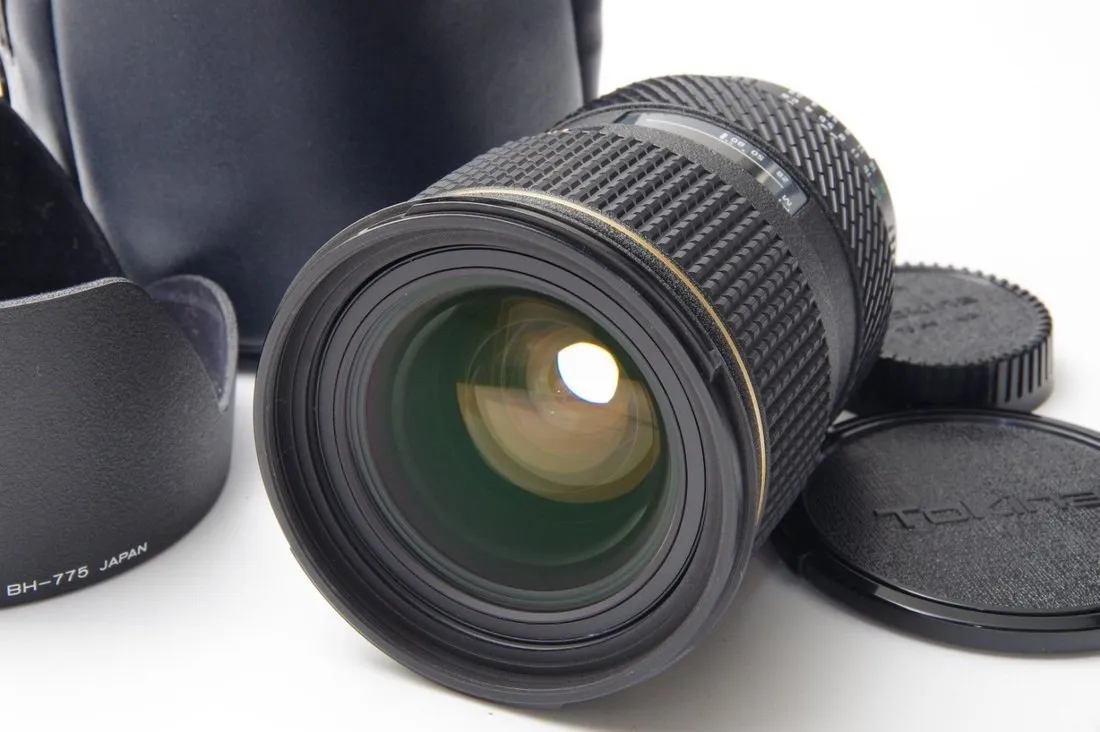
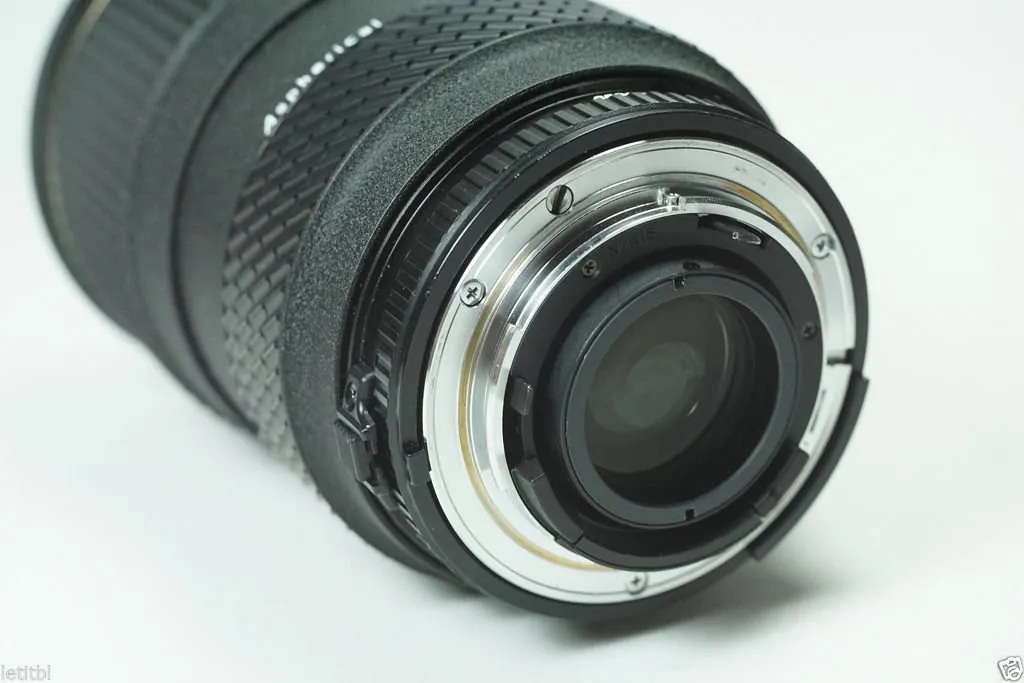

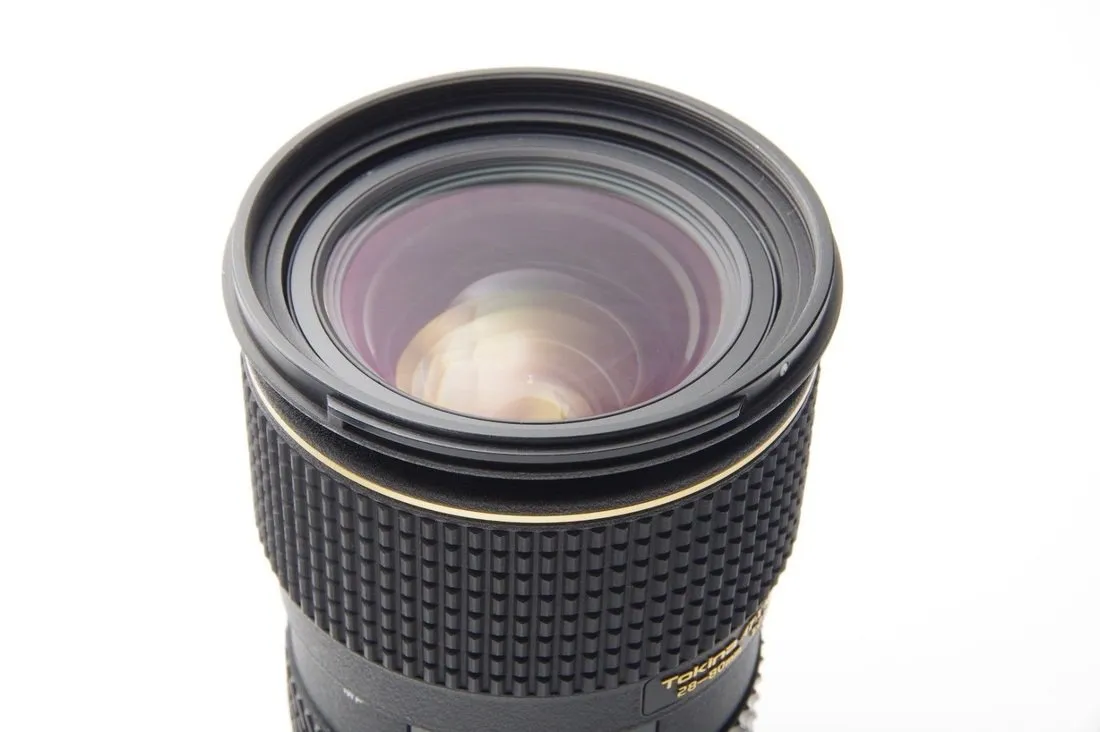
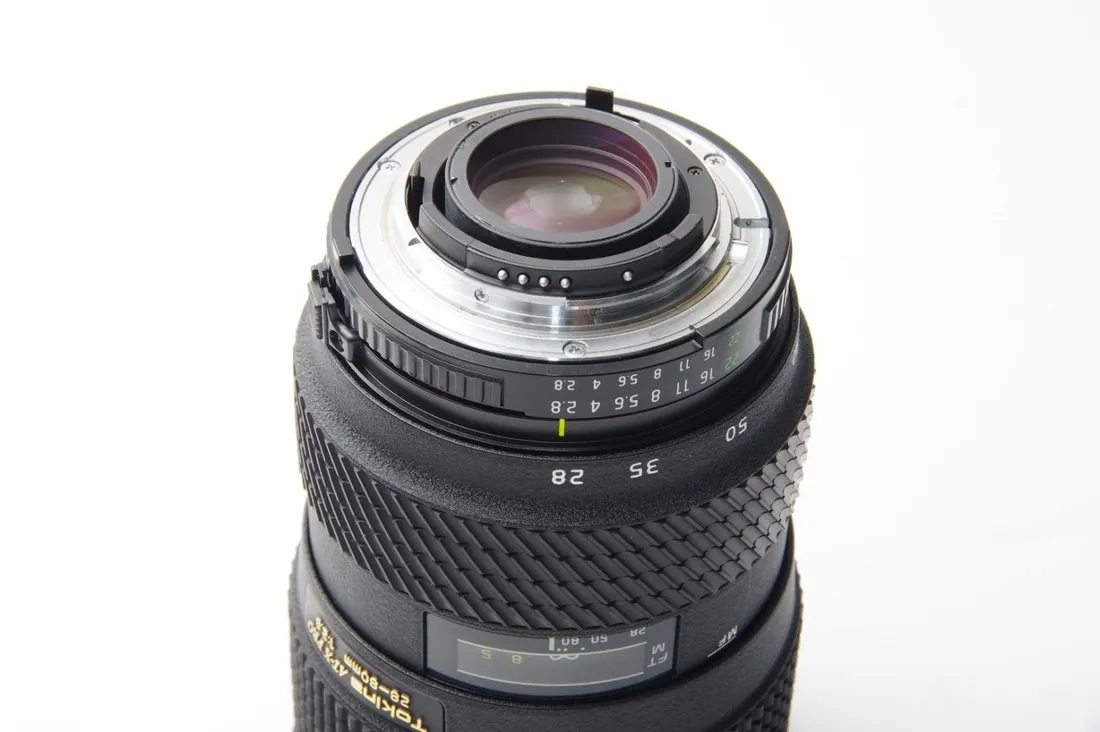



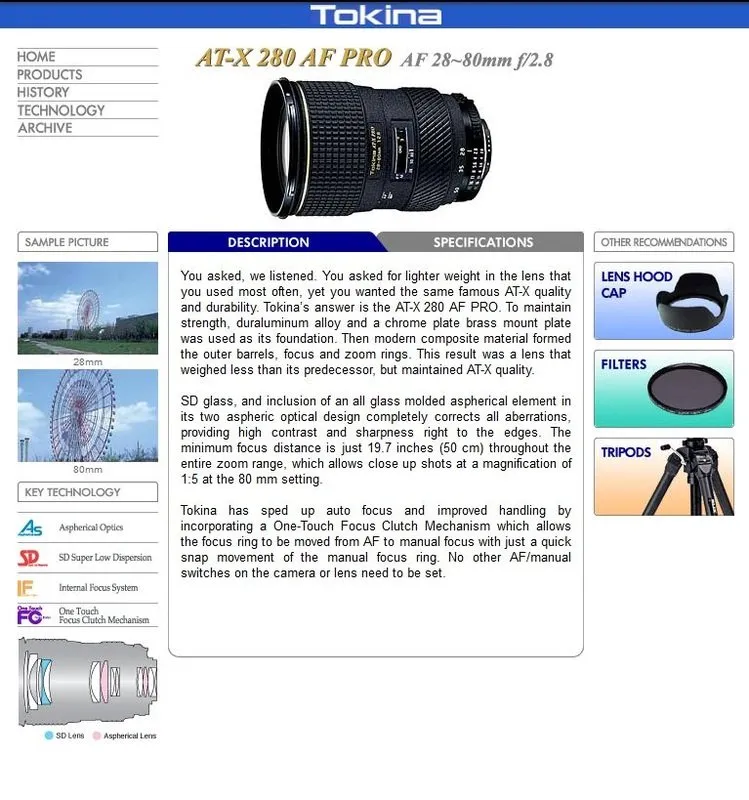
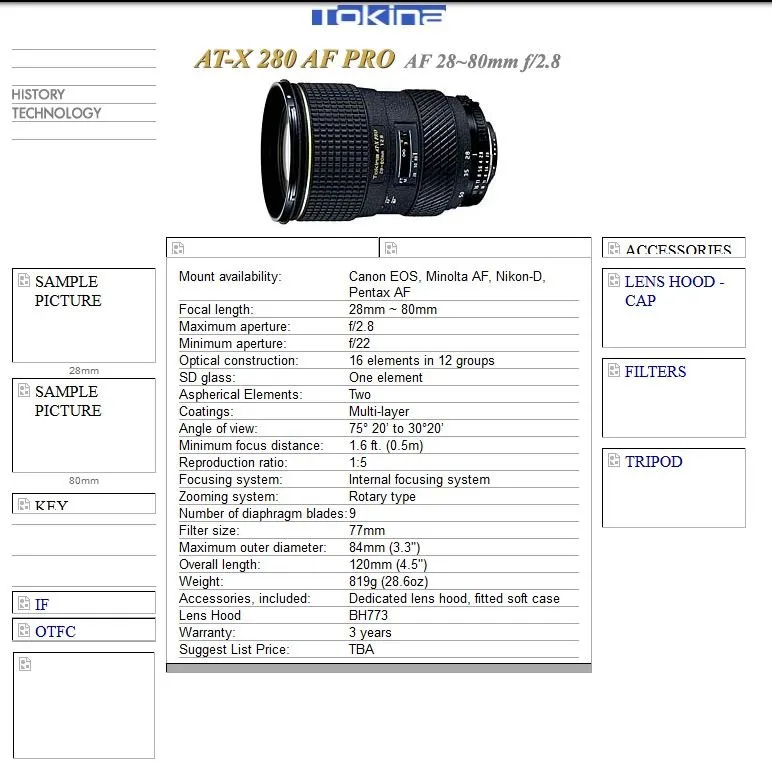
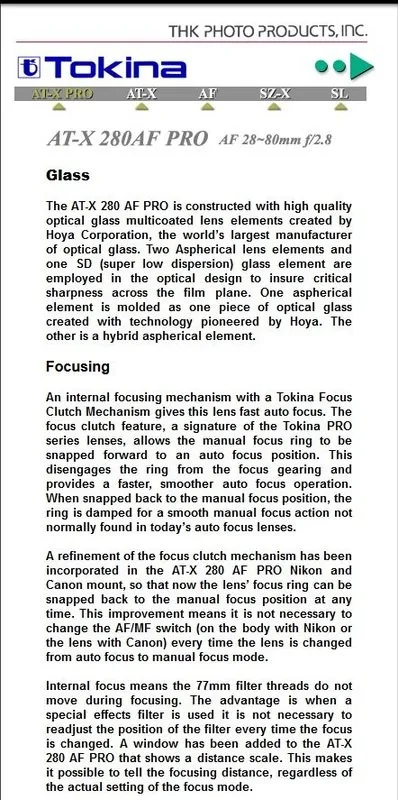
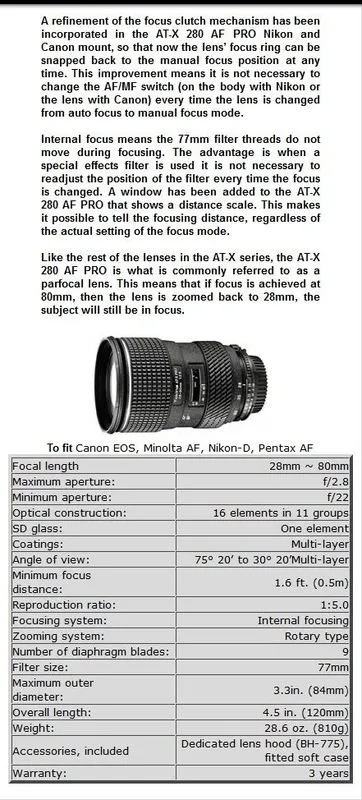
5) TOKINA AT-X PRO SV 28-70MM 1:2.8 Ø 77 JAPAN
This is Tokina's attempt to make the same lens with less money, it pretty much failed. This was labeled the SV version and has no SD or Aspherical elements. A lot of owners have been disappointed by the lesser performance compared to the previous models even though there were more coatings added. SV stands for Super Value and not super performance and this is evident in most tests. My recommendation would be to avoid this version.
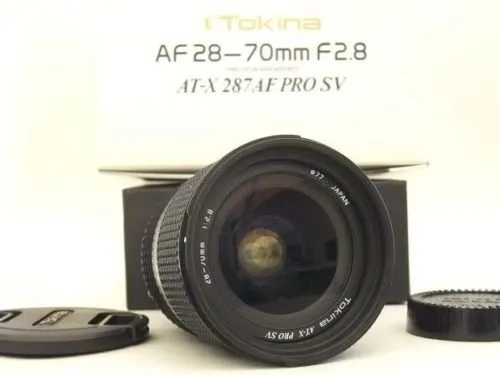

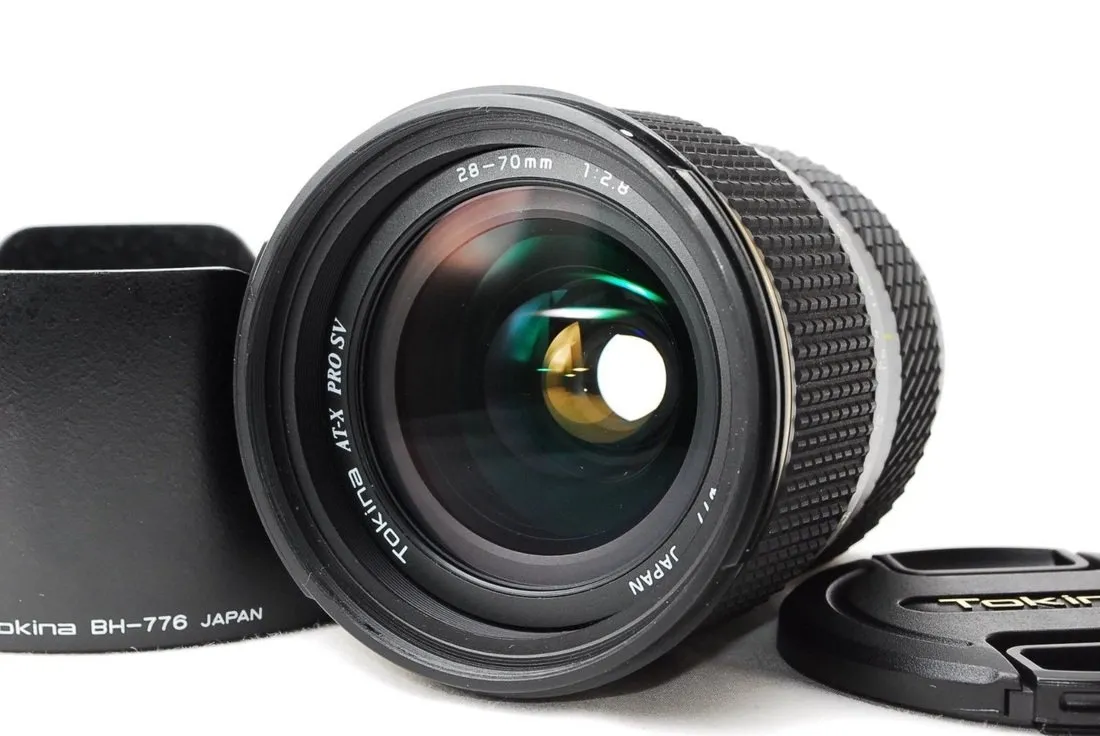

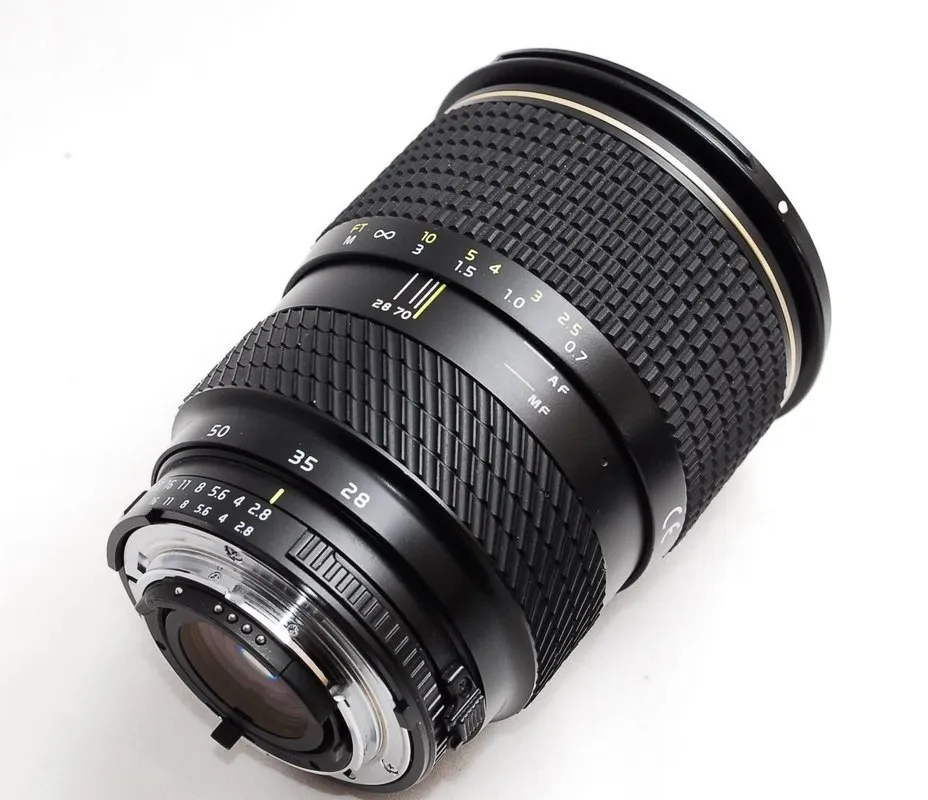
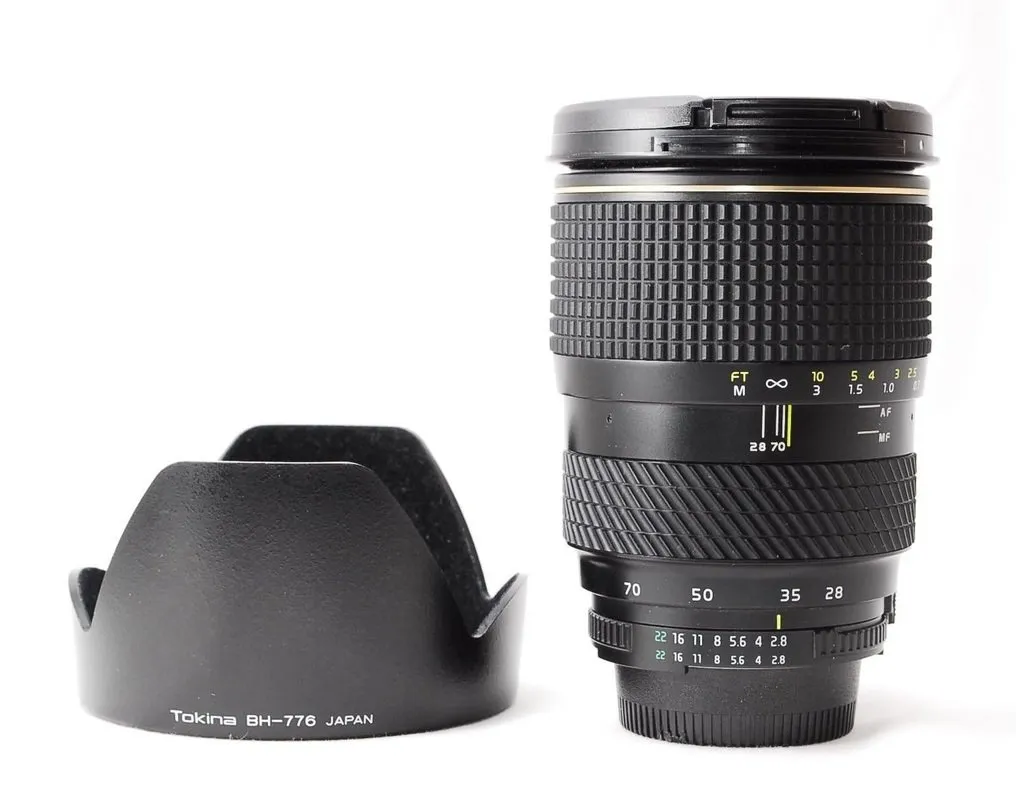
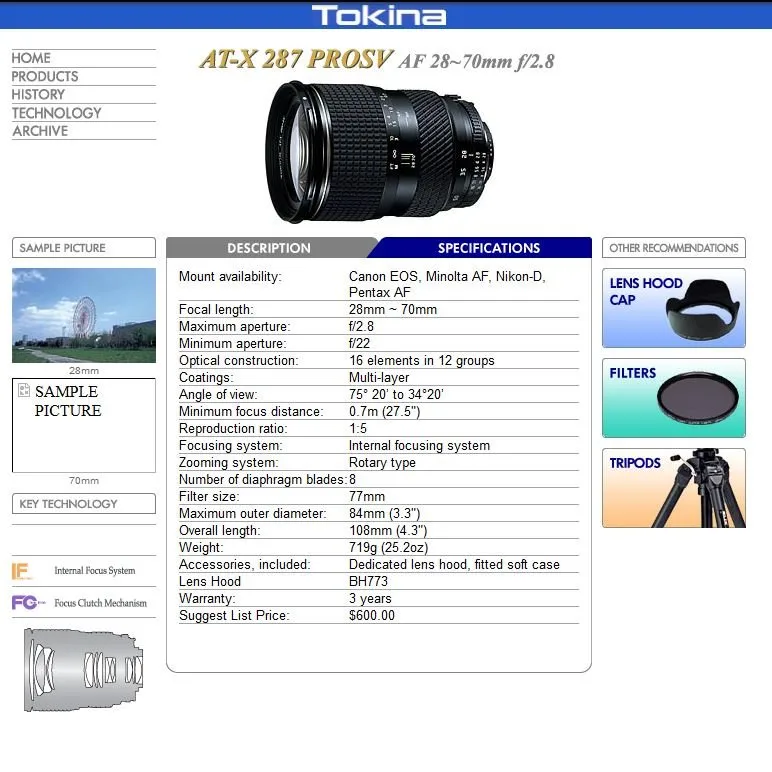
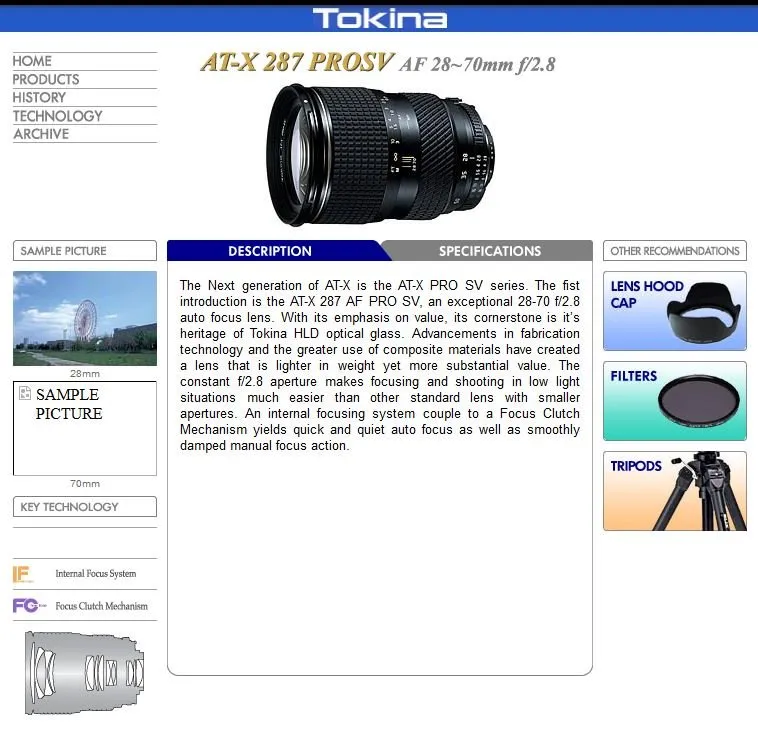
NOTE1: The best performing of all these is the original Pro version which this article is about. Second place goes to the Pro II version though some may argue that the Pro II version should grab the title of best performer in this group. If i was forced to give a numerical value from 1 to 10 on these lenses, then i would probably give both of these a 8,5 so the best buys are the Pro I and Pro II versions. The 28-80 would take 3rd place with a solid 8 and the SV version would take last position with a 6.
NOTE2: All of the aforementioned lenses share similar naming conventions which confuses a lot of people and reviewers alike. So be sure to identify the right lens when involved in a forum discussion. They may seem similar but they are each unique and different. Some may wonder why did Tokina ever stray from the original design and I think it had to do with cost cutting.
QUICK SPECS
* Focal length: 28-70mm (more like 30-70)
* Optical Construction: 16 Elements / 12 Groups
* Picture angle: 75°-34°
* MFD: 0.7m
* Aperture Range: f/2.6-f/22
* Diaphragm: 8 rounded blades
* Filter Size: 77mm
* Dimensions: 79.5 x 109.5mm
* Weight: 760g (mine weighed 780g)
* Lens Hood: BH773
Description
Like most of Tokina lenses in the AT-X Pro range, the build quality is exceptionally high thanks to extensive use of duraluminum-alloy. The all metal construction which is nothing like the plastic feel of lenses from other 3rd party manufacturers, is robust and should stand up to a lot of abuse. Although that makes it heavy, I actually prefer it for the better handling when combined with a good solid body. Something that goes by unnoticed is that the Tokina is a touch slower and narrower than advertised. So at the 28mm marking it performs more like 30mm focal length and with the aperture set to wide open it performs more like a f/3.5 lens due to light transmission loss. This is not unusual and is of no big deal, and for the price, I don't think anyone is going to care.
Whether this particular lens version includes a HLD (High Refractive Low Dispersion) element I am not sure but chances are that it does. The lens features 8 rounded aperture blades which help produce smoother OOF highlights and subsequently better bokeh. Similar to other large aperture standard zooms it isn´t exactly light-weight at 760g but still fairly compact at 110x79mm and easy to handle. The filter size is the standard 77mm but I wouldn't recommend putting a filter on this lens if you want maximum performance. The advertised minimum focusing distance is quite long at 0.7m resulting in a max. object magnification of only ~1:9 at 70mm but in real life, the lens focused to 0.5m resulting in some closely cropped portraits.
Focusing and handling
The lens uses two large rubberized rings for zooming and focusing. The operation on both is very smooth and well damped. The manual focusing action especially is silky smooth, with little resistance and no slack - a real dream to use if you are into manual focusing. On my D700 with battery pack this lens feels like a good match and balances well in the hand. Without the battery pack, the lens makes its weight felt by wanting to nose dive “slightly”, but it still remains a good combo. Unlike some other zooms it does not change its physical length when zooming. Though just like the old Nikkor 80-200mm f/2.8 lens, the front group of elements move within the outer barrel never protruding beyond the filter thread. The AF speed of the lens is quite fast, probably as fast if not faster than my AFS 17-55mm, as long as you haven't left the focusing ring in the MF position. The noise during AF operation is noticeable and obviously louder than my AFS 17-55mm but I wouldn't say this lens is noisy.
Focus clutch mechanism
To those not familiar with Tokina lenses, this lens features the so called focus-clutch mechanism which allows you to change between AF and MF operation by pushing/pulling the focus ring (You use this in conjunction with the AF/MF switch on the camera body). As i have already noted on my Tokina 300mm review, I'm not really impressed by this feature but it seems to work OK once you get used to it. Its not so much of a problem for AF shooters but can be problematic if you prefer to manual focus. And if that wasn’t enough, changing from AF to MF or the opposite, requires not only the sliding of the focusing clutch to the right position but also the selection of the AF mode on the camera body as well. Unfortunately this is the "price" you pay.
Optical performance
Some people on the internet wrongfully post that this lens is super soft wide open when in fact it's pretty sharp. What they don't realize is that the lack of contrast is what gives the impression of softness and this is something that can be corrected to some degree in post processing. All of the various versions of this lens design perform OK but the best performance belongs to the original pro version. It's pretty sharp even towards the edges wide open on a full frame D700 - what it lacks is contrast which gives the impression of less sharpness.
The original Pro version also has a different rendering of the OOF areas and seems to have better bokeh. Like the rest of its family relations it's a bit lacking in the coating department so care must be taken when shooting with a bright light source within the taking frame. Allow me to be more specific here in saying that performance can be maximized by protecting the front element from both dirt and stray light. So keep that front and rear element as clean as possible and try to find a good hood to use. You should also know that the use of a protector filter such as a cheap UV is prohibited since this will only multiply the problem of this lens to flare or ghost (you've been warned). The lens offers a non-rotating 77mm filter mount and should only be used when a polarizer is needed.
Closing down to f/3.5 improves sharpness and contrast a lot and this is important to know. By f/4 the images produced on a FX sensor are non distinguishable from any Nikkor and by f/5.6 it performs just as well as any Nikkor even on a DX sensor. What this means is that since this is not a high resolving lens like the Nikkor, it performs better on the 12MP FX sensor than it does on the demanding 12MP DX sensor.
Sharpness & detail
Excellent at all apertures with best performance between f/4 and f/8. You can shoot at f/2.8 if you really need the speed, but that would require some extra post processing to bring the contrast up and the sharpness a little. At f/4 image resolution is excellent. At f/16-f/22 diffraction spoils the finer details in a big way, so avoid these small apertures at all costs.
Chromatic aberrations
Like a lot of Tokina products, some color fringing in high contrast areas might show up at times, but most of it can be corrected in post processing. The real problem with this lens is flaring something that can be controlled to a certain point.
Vignetting
Like all fast lenses, the Tokina AT-X PRO AF 28-70mm f/2.6-2.8 is also prone to some noticeable vignetting, which should be of no surprise. There is some light fall-off at the corners when shooting wide open on full frame but on the DX format that translates to just noticeable.
Distortion
On the DX format cameras there is no distortion. On FX the distortion near the corners at 28mm can be annoying, although cheaper consumer zooms are no better. If you are shooting architecture at this focal length, find a better lens. If on the other hand you are used to consumer zooms then you'll probably find the Tokina to be distortion free by comparison.
Should you buy the Tokina or the Nikon?
Well this you need to answer yourself. An AFS 24-70mm costs around 1500€, and a second hand AFS 28-70mm f/2.8 can fetch 800€ so a used Tokina at 200€ is not only a bargain but a steal. Even the Sigma 24-70mm f/2.8 EX DG HSM costs over 800€. Of course if you are a pro and plan on using it every day wide open, then maybe you should spend the money for the Nikon. On the other hand the Tokina Pro I & Pro II are so cheap on e-Bay and their performance so close that you would have to be crazy to at-least not try one out!
Upvote and share
If you enjoyed this article I would really appreciate an upvote ;-) You could also help me by resteeming my article for others to find and read, thanks!